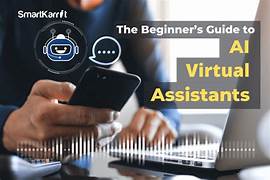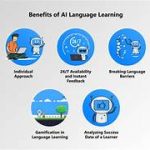AI-Driven Virtual Teaching Assistants in Classrooms
The rapid evolution of artificial intelligence (AI) is transforming education, enabling more personalized and engaging learning experiences. Among the most promising applications is the use of AI-driven virtual teaching assistants (VTAs) in classrooms. These digital tools, powered by sophisticated algorithms, are reshaping how teachers and students interact, making education more accessible, efficient, and tailored to individual needs. This article explores the role, benefits, challenges, and future of AI-driven VTAs in educational settings.
The Role of AI-Driven Virtual Teaching Assistants
AI-driven VTAs are software-based systems designed to assist teachers in managing classroom activities and providing personalized support to students. They operate through natural language processing (NLP), machine learning (ML), and data analytics, enabling them to:
- Answer Student Queries: VTAs can respond to students’ questions in real-time, providing instant clarification on topics ranging from math problems to historical events. This reduces the waiting time for assistance and enhances learning continuity.
- Facilitate Administrative Tasks: Teachers often spend significant time on administrative duties like grading, attendance tracking, and resource management. VTAs can automate these tasks, freeing educators to focus more on teaching and mentorship.
- Offer Personalized Feedback: By analyzing individual performance, VTAs can provide tailored feedback to students, highlighting their strengths and areas for improvement.
- Monitor Progress and Engagement: These systems track students’ academic progress and engagement levels, alerting teachers to those who may need additional support.
- Enhance Collaborative Learning: VTAs can foster collaboration by organizing group activities, moderating discussions, and ensuring equitable participation among students.
Benefits of AI-Driven VTAs in Classrooms
The integration of AI-driven VTAs offers numerous advantages for both educators and learners:
1. Personalized Learning Experiences
VTAs adapt to individual learning styles, pacing, and preferences. For example, they can recommend supplementary materials for advanced learners or break down complex concepts for those struggling. This personalization helps create an inclusive learning environment.
2. Increased Accessibility
AI-driven VTAs can bridge gaps for students with disabilities or language barriers. For instance, they can provide real-time translation, text-to-speech, or visual aids, ensuring that education is accessible to everyone.
3. Teacher Support
By handling routine tasks, VTAs reduce teacher workload, allowing educators to concentrate on creative and interpersonal aspects of teaching. They also serve as a resource for lesson planning and curriculum development.
4. Data-Driven Insights
VTAs collect and analyze data on student performance, attendance, and engagement. These insights help teachers make informed decisions about instructional strategies and interventions.
5. 24/7 Availability
Unlike human instructors, VTAs are available around the clock. Students can access help anytime, enhancing their learning experience and promoting independent study habits.
Challenges and Ethical Considerations
While the potential of AI-driven VTAs is immense, their adoption comes with challenges and ethical concerns:
1. Data Privacy and Security
VTAs rely on extensive data collection, raising concerns about student privacy and data security. Ensuring compliance with regulations like the General Data Protection Regulation (GDPR) or the Family Educational Rights and Privacy Act (FERPA) is crucial.
2. Bias in AI Systems
If the training data for VTAs contains biases, the system might inadvertently favor certain groups or provide inaccurate assessments. Developers must prioritize diversity and inclusivity in data sets and algorithm design.
3. Teacher-Student Relationships
Overreliance on VTAs could diminish the human connection between teachers and students, which is essential for emotional and social development. Striking a balance between automation and human interaction is vital.
4. Cost and Infrastructure
Implementing AI-driven VTAs requires substantial investment in technology and infrastructure. Resource-limited schools may struggle to adopt these systems, exacerbating educational inequalities.
5. Adaptation and Training
Teachers need training to effectively integrate VTAs into their classrooms. Resistance to change or lack of technical proficiency can hinder adoption and impact effectiveness.
Case Studies and Examples
Several educational institutions have already embraced AI-driven VTAs, showcasing their potential:
- IBM Watson Education: IBM’s AI platform assists teachers in personalizing lesson plans and offers students real-time tutoring. Schools using Watson have reported improved student engagement and academic performance.
- Duolingo: While primarily a language-learning app, Duolingo acts as a virtual teaching assistant, adapting lessons to users’ progress and providing instant feedback.
- Carnegie Learning’s MATHia: This AI-driven platform offers personalized math tutoring and feedback, enabling students to learn at their own pace.
The Future of AI-Driven VTAs
The future of AI-driven VTAs is promising, with advancements expected in the following areas:
1. Improved Emotional Intelligence
Future VTAs could incorporate emotion recognition, allowing them to respond empathetically to students’ needs and moods.
2. Gamification and Engagement
Integrating gamified elements into VTAs can make learning more interactive and enjoyable, boosting student motivation and retention.
3. Enhanced Multimodal Learning
VTAs will likely support diverse learning formats, such as virtual reality (VR), augmented reality (AR), and interactive simulations, enriching the educational experience.
4. Global Collaboration
Advanced VTAs could connect classrooms worldwide, facilitating cross-cultural learning and global collaboration among students.
5. AI-Educator Partnerships
As AI systems evolve, the role of teachers will shift towards facilitation and mentorship, with VTAs complementing their efforts rather than replacing them.
Conclusion
AI-driven virtual teaching assistants are revolutionizing classrooms by enhancing learning experiences, supporting teachers, and fostering personalized education. While challenges like data privacy, bias, and cost must be addressed, the benefits of these systems outweigh the drawbacks when implemented thoughtfully.
The key to successful integration lies in maintaining a balance between technological innovation and human interaction. By leveraging the strengths of AI and prioritizing ethical considerations, educators can create a future where every student has access to quality, personalized learning opportunities. As AI-driven VTAs continue to advance, they hold the potential to redefine education, making it more inclusive, engaging, and effective for learners worldwide.


